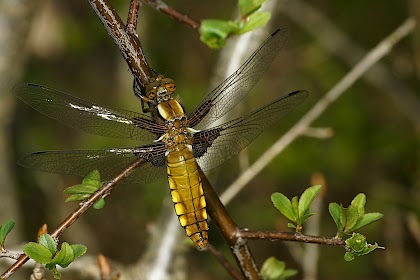Actions | Preparatory actions
Biological indicators
All our results in full details or summarised.
During the preparatory phase of the project (a very important step) permanent scientific checks will be put in place on the indicators of the conservation status for a selection of habitats of high biological value.
This monitoring process will allow the initial situation under the lines to be explored (before "LIFE" management) and will allow the progress made during and after the LIFE project to be recorded. It will provide a means for checking the reactions of fauna and flora to the methods of management used and therefore for evaluating how suitable they are.
The different monitoring tools will be put in place and the techniques tested and validated or adapted so that they are optimal during the project. In the interests of coherence at the Walloon level, we will take as our example the monitoring process undertaken by DEMNA (Département de l'Etude du Milieu Naturel et Agricole - Department for Studying the Natural and Agricultural Environment) on the entire Walloon Natura 2000 network with the aim of monitoring the conservation status of sites.
There will be annual checks during the project and we will work hard to maintain monitoring in the post-LIFE situation, according to a different, scaled-down formula to be defined to guarantee that it is continued by Walloon administration services or local volunteer naturalist organisations.
In order to carry out these checks, sample plots will be chosen, and year after year readings will be taken there during the same periods, which will allow progress to be monitored.

Different checks are possible and depend on what we want to evaluate:
- Birds: In order to monitor the bird population in a location and how this develops, we will set up a listening point. An observer will visit within fixed periods and for specific durations, year after year, in order to note down any sightings and/or audible records of birds in a given space.
- Bats: The technique is the same but a bat detector will be used; this is a device that makes the ultrasound signals produced by the bats audible and therefore allows us to find out about the species flying over the site.
- Mammals: The majority of species are difficult to record but monitoring damage to trees caused by deer stripping bark can be done at certain plots.
- Plants: A standardised inventory will be carried out in the same places and on the same areas called fixed quadrats or botanical transects.
- Dragonflies and butterflies: Species counts will be carried out along transects or in ponds.
- Reptiles: Pieces of sheet metal will be spread across the terrain. Reptiles appreciate the shelter that they offer and the heat that gets contained there. It would be sufficient to simply record the species and number of individuals found there.
- Frogs and toads: Readings will be regularly taken in the ponds using a net to make a note of the species present.
Each activity carried out as part of the LIFE project will have its own monitoring method which will allow its relevance to be assessed.
By checking these indicators the long-term management methods can be refined in accordance with the results obtained for each activity:
- Restoration of edges: choice of tree species - methods of installation (planting, natural regeneration, etc.)
- Protected orchards: origin of plants - species and varieties chosen - area and density
- Restoration of moors and peatlands: methods used for restoring habitats (mowing, clearing, sod removal, modification of the hydrological regime, etc.) - bringing in local "hay" to strengthen the seed bank
- Creation of ponds: area, type of bank, depth - whether or not plants or seeds are initially brought in - exposure - substratum/natural region
- Fight against invasive species: species targeted by this approach - method of eradicating or containing populations
- Pasture: choice of species/breeds of livestock to be used, areas for pasture and density of livestock.
- Mowing: techniques used (tractor, motorised mower, strimmers, etc.), frequency and period of mowing to be recommended, future use for hay.
- Flower meadows: choice of seed mixtures (species, origins, seed density), type of management to be carried out according to the substratum or region
Once the restoration work (C actions) has been completed, the monitoring work will enable a comparison to be made considering the effects of the restoration on the development itself and on the correct functioning of the habitat.

This information will be necessary to draft the vade mecum (action D6) and thus to extend the innovative practices for managing the electricity network at the European level. We will therefore be able to present a critical analysis of how well-founded the management/restoration operations are on the basis of these reliable indicators, which are largely used in the field of nature conservation.












